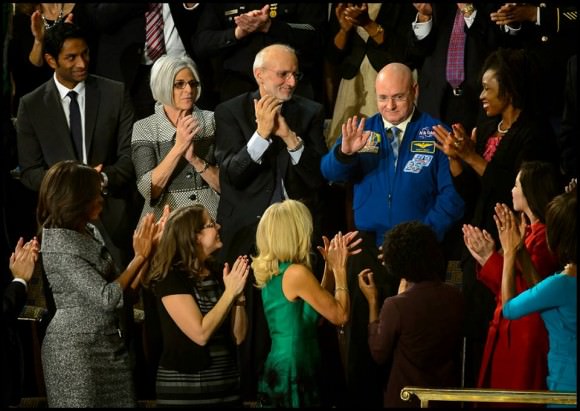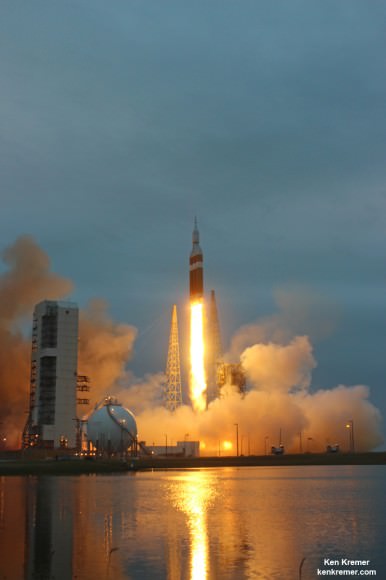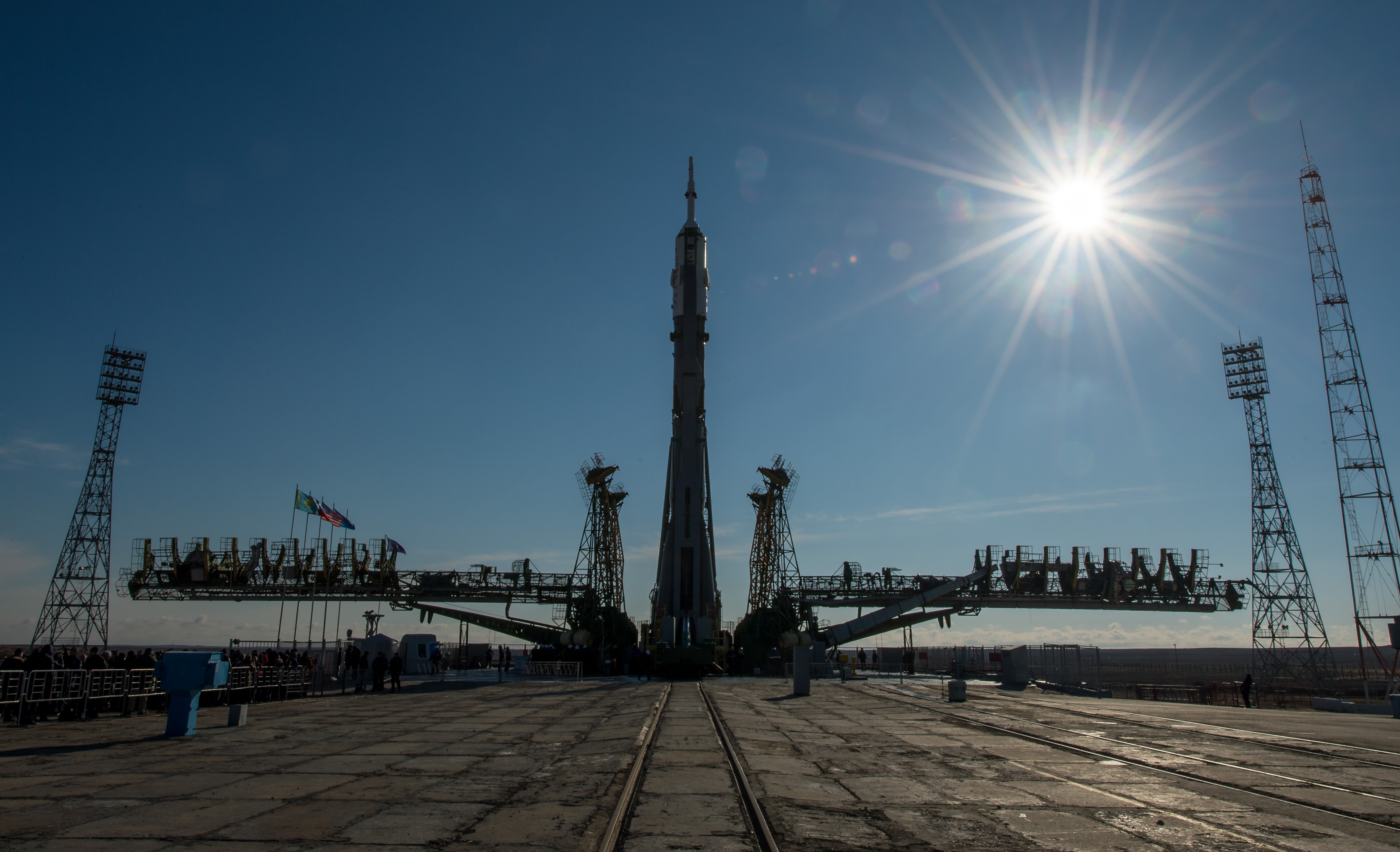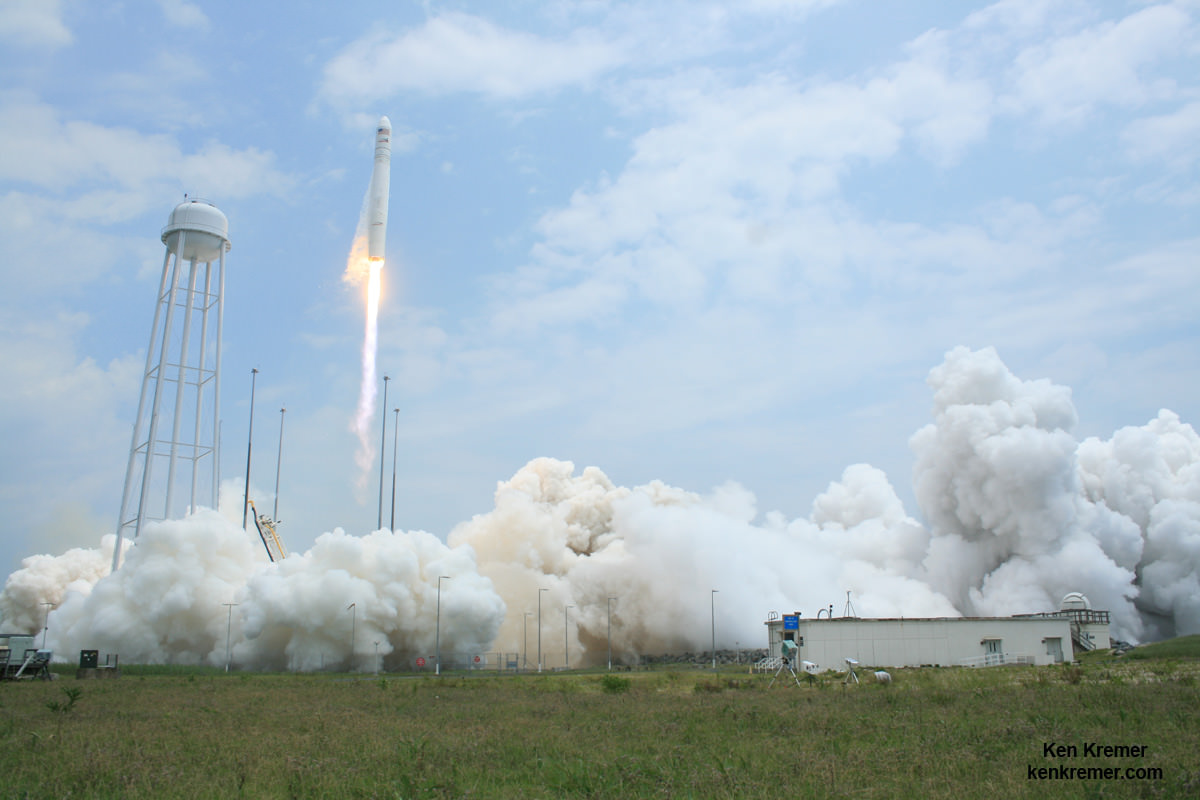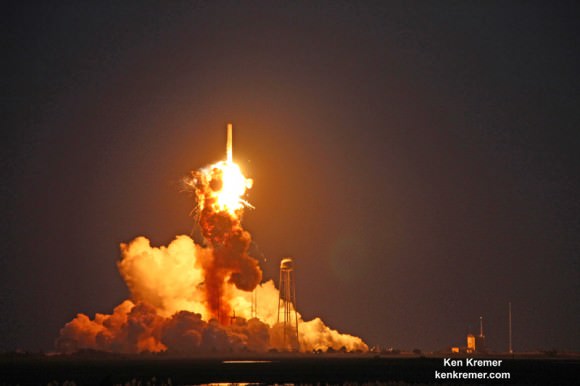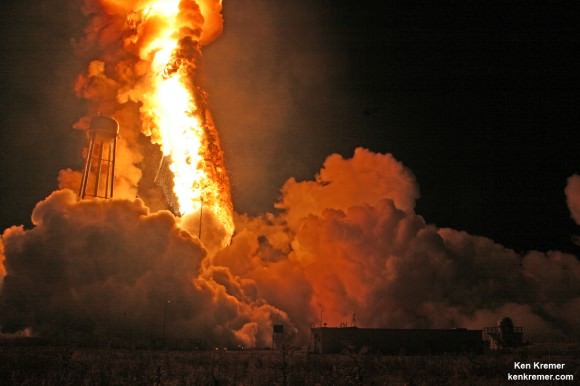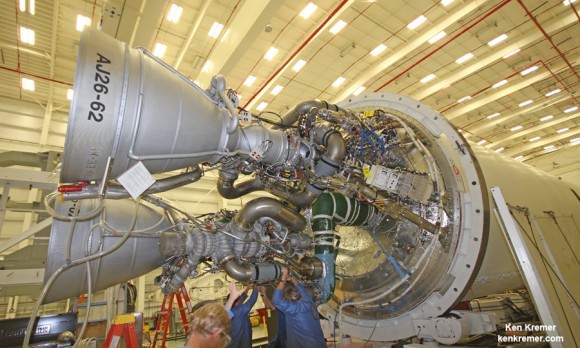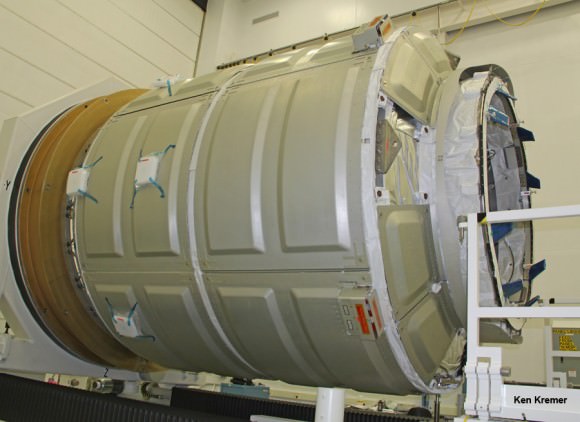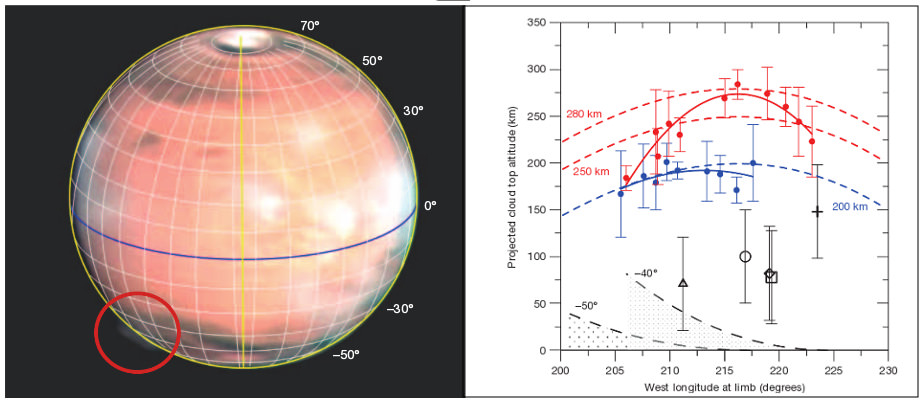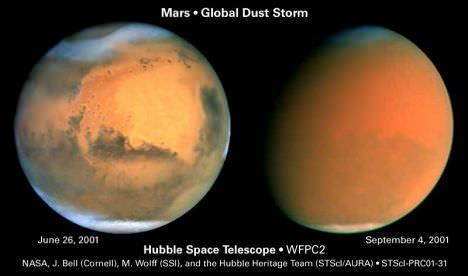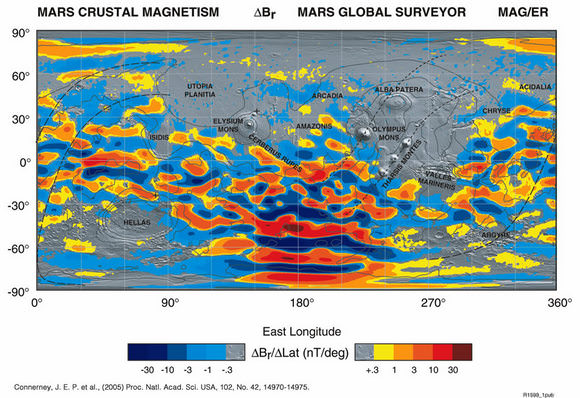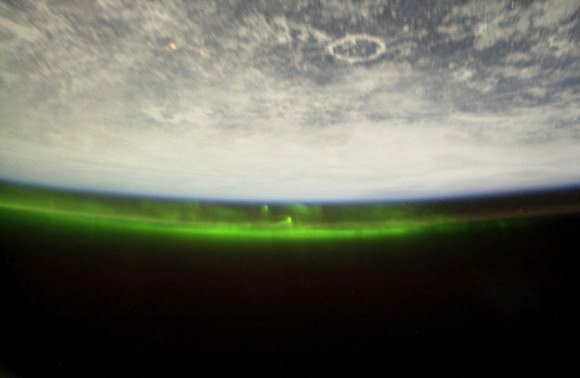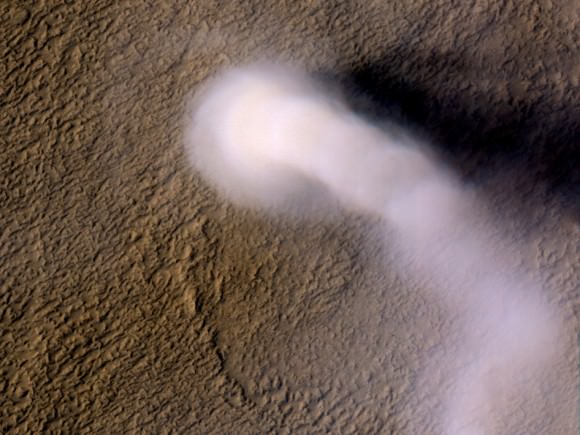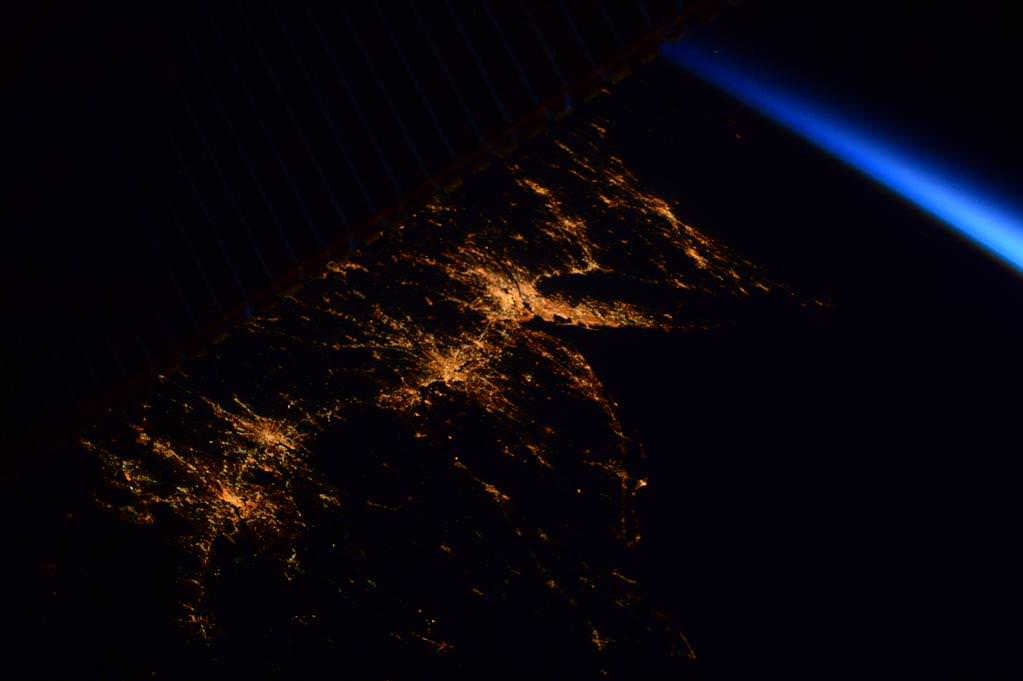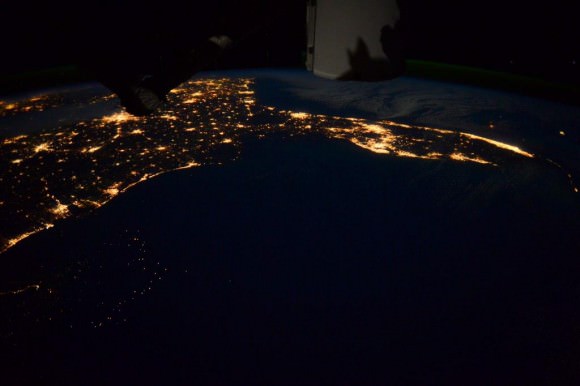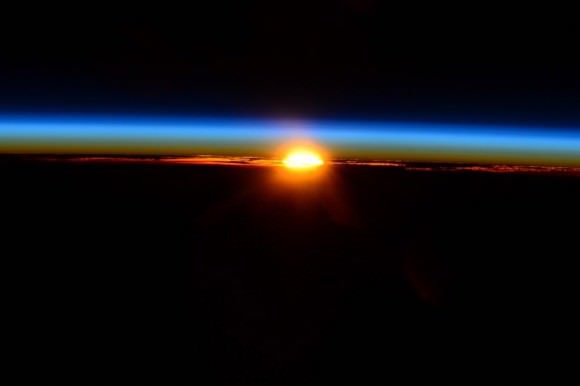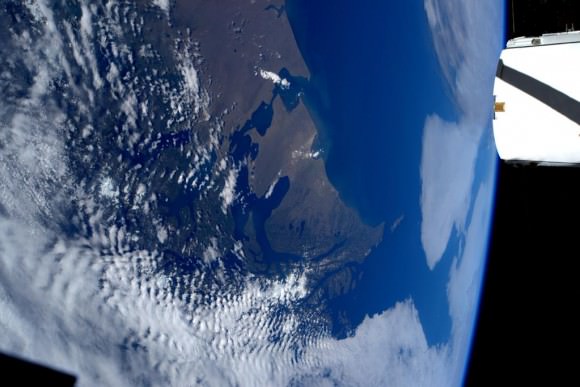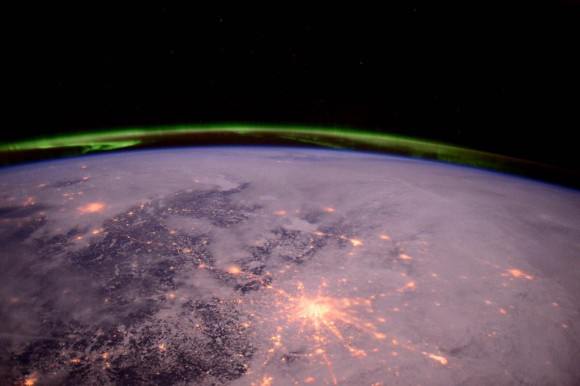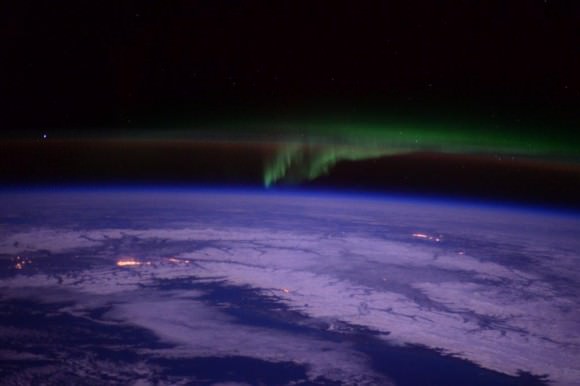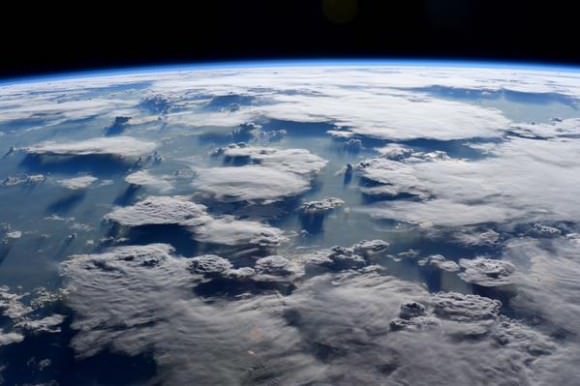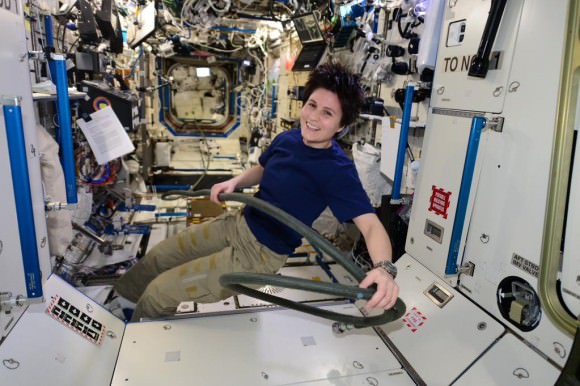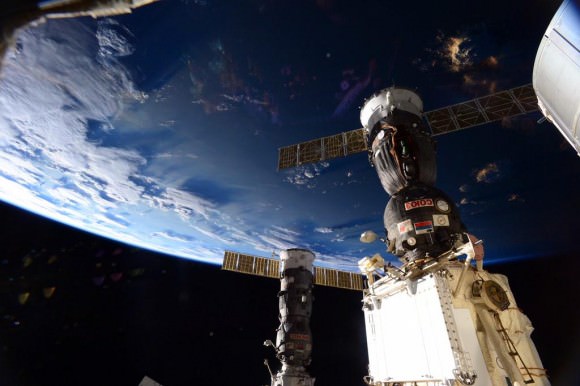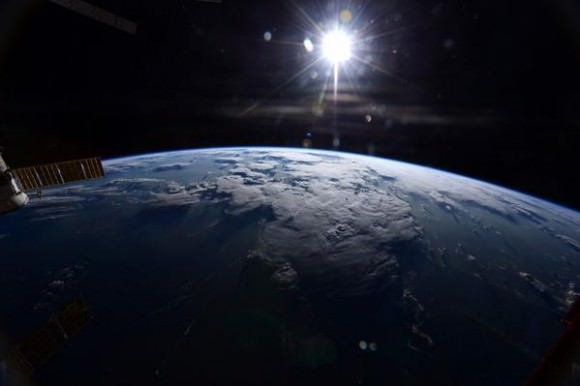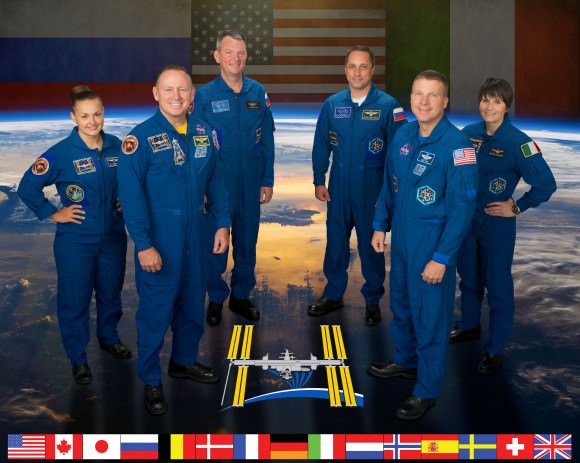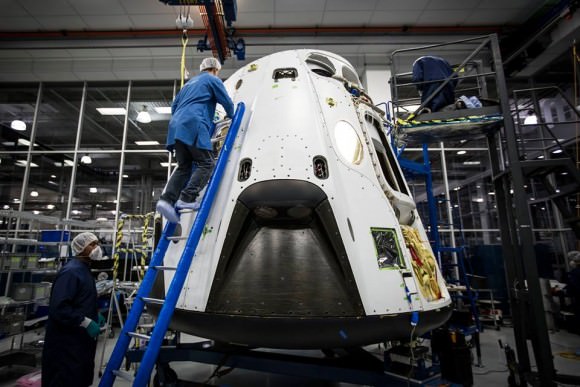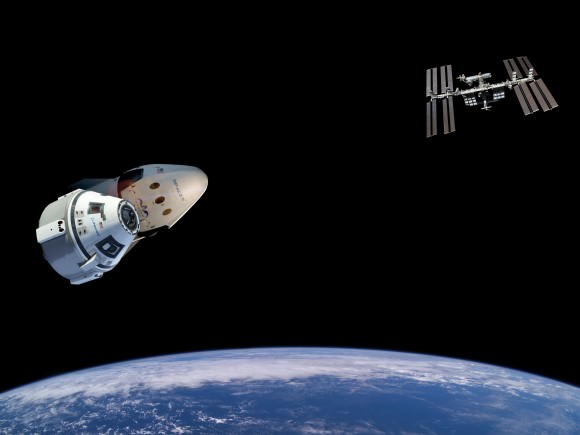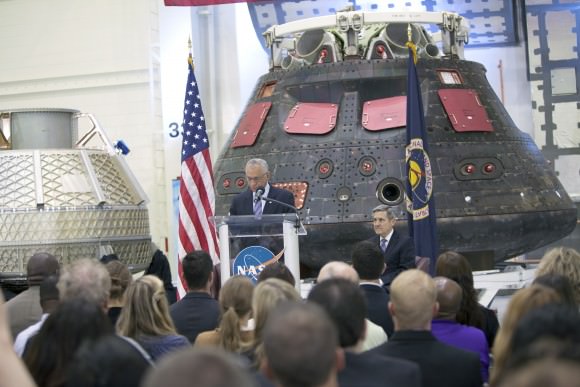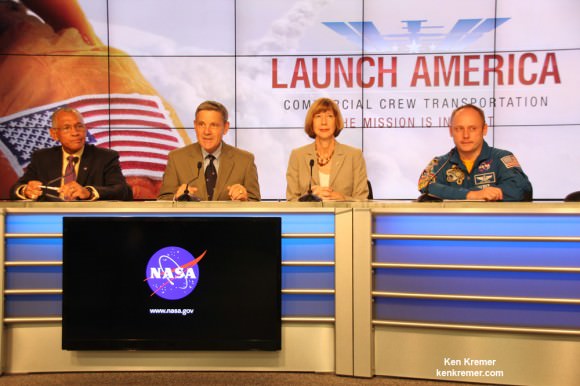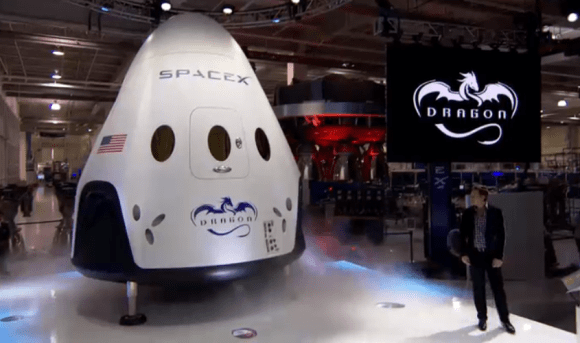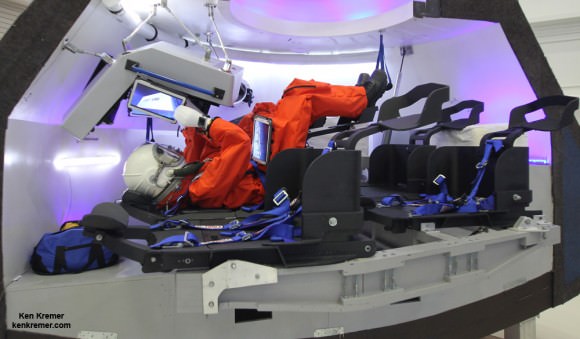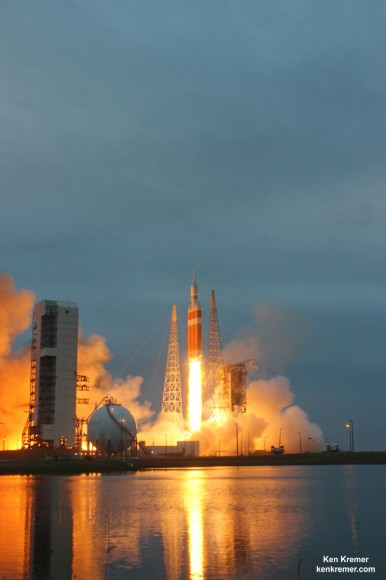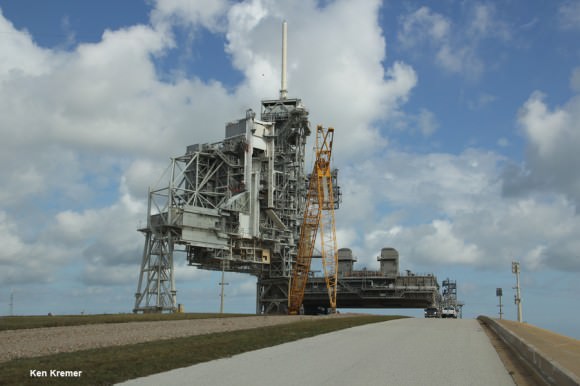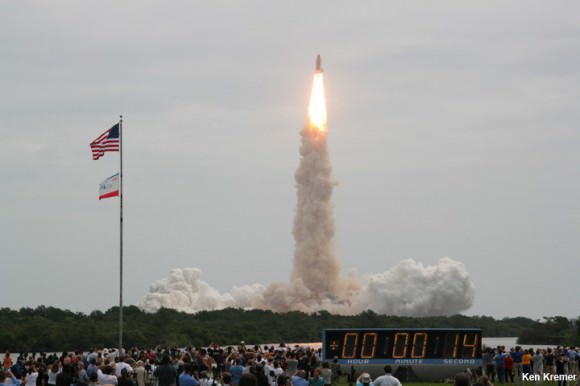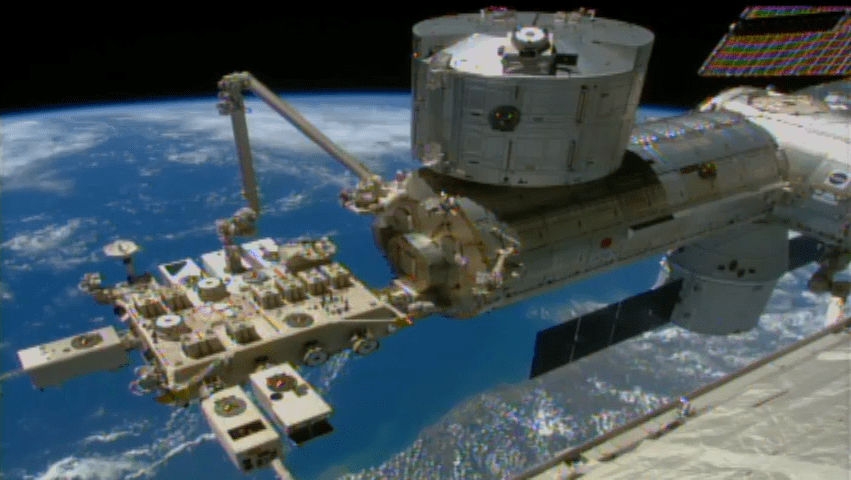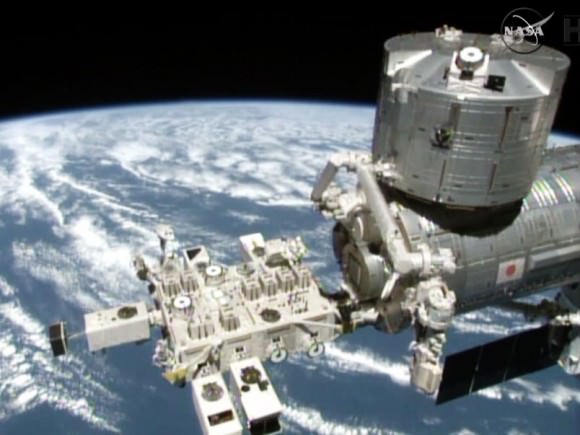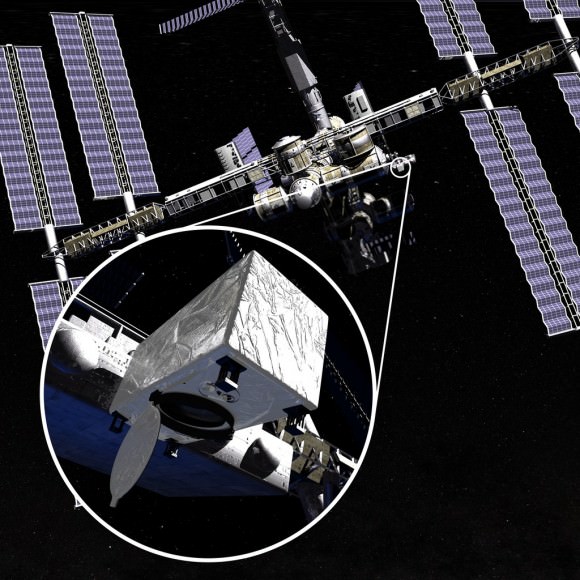Soyuz Spacecraft Rolled Out For Launch of One-Year Crew
The Soyuz TMA-16M spacecraft is seen after having rolled out by train to the launch pad at the Baikonur Cosmodrome, Kazakhstan, Wednesday, March 25, 2015. NASA astronaut Scott Kelly and Russian cosmonauts Mikhail Kornienko and Gennady Padalka of the Russian Federal Space Agency (Roscosmos) are scheduled to launch to the International Space Station in the Soyuz at 3:42 p.m. EDT, Friday, March 27 (March 28, Kazakh time). Credit: NASA/Bill Ingalls
Watch live on NASA TV link below[/caption]
At long last, the first ever crew embarking on a 1 year mission to the International Space Station (ISS) – comprising NASA astronaut Scott Kelly and Russian cosmonaut Mikhail Kornienko (both veterans) – is slated for blastoff just hours from now aboard a Soyuz capsule from the Baikonur Cosmodrome, Kazakhstan.
The history making launch is scheduled for 3:42 p.m. EDT/1942 GMT Friday, March 27 (March 28, Kazakh time) – with veteran Russian cosmonaut Gennady Padalka rounding out the three man crew of Expedition 43.
The Soyuz spacecraft and rocket have been rolled out to the launch pad for the one-year crew. The crew is boarding the Soyuz.
You can watch the launch live on NASA TV today. Click on this link: http://www.nasa.gov/multimedia/nasatv/index.html
NASA TV live launch coverage begins at 2:30 p.m. EDT.
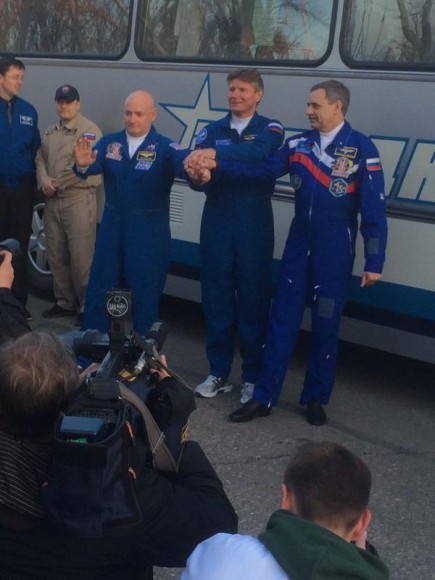
The crew will rendezvous and dock at the ISS at the Poisk module around 9:36 p.m EDT – only about four orbits and six hours after liftoff.
Hatch opening is schedule for about 11:15 p.m. EDT this evening.
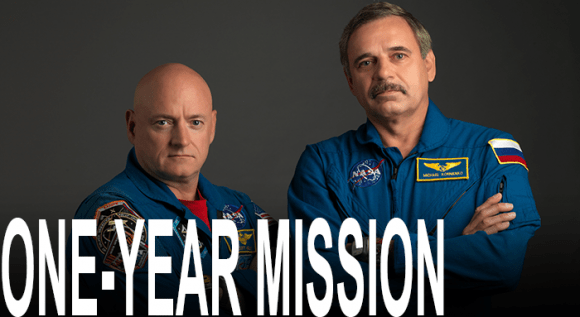
The one-year mission represents concrete first steps toward start fulfilling NASA’s “Journey to Mars” objective and sending “Humans to Mars” in the 2030s.
“The one-year mission in space, tests the limits of human research, space exploration and the human spirit,” says NASA.
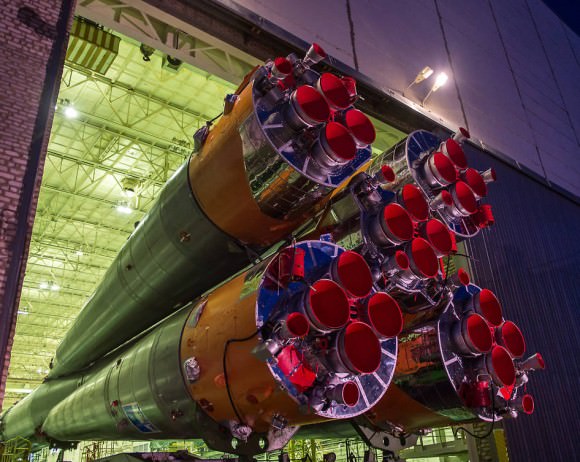
The pathfinding mission is about double the normal time of most expeditions to the Earth orbiting space station, which last four to six months.
The goal is to provide critical knowledge to NASA and researchers hoping to better understand how the human body reacts and adapts to long-duration spaceflight.
The 1 Year mission will provide baseline knowledge to NASA and its station partners – Roscosmos, ESA, CSA, JAXA – on how to prepare to send humans on lengthy deep space mission to Mars and other destinations into our Solar System.
Astronaut Scott Kelly will become the first American to live and work aboard the orbiting laboratory for a year-long mission and set a new American record.
Scott Kelly and Russian Cosmonauts Kornienko and Padalka are all veteran spacefliers.
They have been in training for over two years since being selected in Nov. 2012.
No American has ever spent anywhere near a year in space. 4 Russian cosmonauts conducted long duration stays of about a year or more in space aboard the Mir Space Station in the 1980s and 1990s.
Kelly and Kornienko will stay aboard the ISS until March 3, 2016, when they return to Earth on the Soyuz TMA-18M after 342 days in space. Kelly’s combined total of 522 days in space, will enable him to surpass current U.S. record holder Mike Fincke’s mark of 382 days.
Padalka will return in September after a six month stint, making him the world’s most experienced spaceflyer with a combined five mission total of 878 days in space.
They will conduct hundreds of science experiments focusing on at least 7 broad areas of investigation including medical, psychological and biomedical challenges faced by astronauts during long-duration space flight.
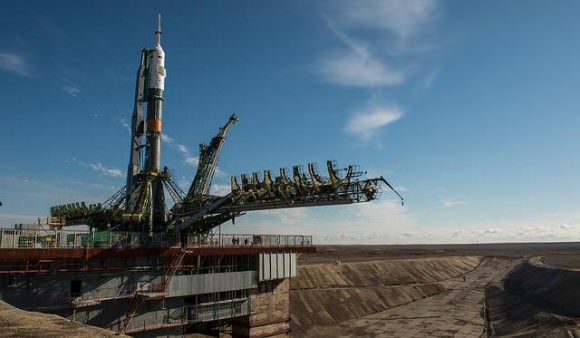
Kelly is a veteran NASA Space Shuttle commander who has previously flown to space aboard both the Shuttle and Soyuz. He also served as a space station commander during a previous six-month stay onboard.
Kelly was recently featured in a cover story at Time magazine.
Here’s an online link to the Time magazine story : http://ti.me/1w25Qgo
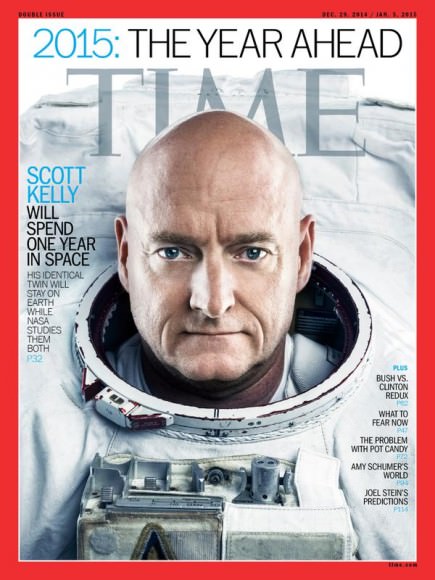
President Obama gave a shout out to NASA Astronaut Scott Kelly and his upcoming 1 year mission to the International Space Station (ISS) at the 2015 State of the Union address to the US Congress on Tuesday evening, Jan. 20, 2015.
Kelly’s flight will pave the way for NASA’s goal to send astronaut crews to Mars by the 2030s. They will launch in the Orion crew vehicle atop the agencies mammoth new Space Launch System (SLS) rocket, simultaneously under development.
Read my coverage of Orion and SLS progress to stay up to date – including first hand from onsite at the Kennedy Space Center press site for the launch of Orion EFT-1 on Dec. 5, 2015.
Good luck and Godspeed to Kelly, Kornienko and Padalka – starting on the road to Mars !!
Stay tuned here for Ken’s continuing Earth and planetary science and human spaceflight news.
